Introduction
The Design Act was established to protect design of product appearance.
Although product appearance is mainly protected by the Design Act, in some cases it can be protected by other laws related to intellectual properties (e.g., the Patent Act, the Utility Model Act, the Trademark Act, the Copyright Act, and the Unfair Competition Prevention Act that have aspects different from those of the Design Act (see “~ Laws for Protecting Design of Product Appearance ~” below).
Understanding the means for protecting design of product appearance under such laws different from the Design Act allows you to determine by which law you can optimally protect your design.
~ Laws for Protecting Design of Product Appearance ~
- Patent Act
- Utility Model Act
- Design Act
- Copyright Act
- Trademark Act
- Unfair Competition Prevention Act
- Design Act
- Trademark Act
Design Act
As described above, design of product appearance is mainly protected by the Design Act. So, what is the “design” defined by the Design Act?
Article 2 (1) of the Design Act defines the “design” as “the shape, patterns or colors, or any combination thereof, of an article (including a part of an article, the same shall apply hereinafter except in Article 8), which creates an aesthetic impression through the eye.”
- 1. The design is of an article (hereinafter, referred to as “article requirement”).
- 2. The design is of the form of an article itself (hereinafter, referred to as “form requirement”).
- 3. The design is visually appealing (hereinafter, referred to as “visibility requirement”).
- 4. The design arouses an aesthetic impression through the eye (hereinafter, referred to as “aesthetic requirement”).
1. Article Requirement
An article defined by the Design Act refers to, “among tangible objects, movable objects that are distributed through the market”.
* Definition of Tangible Object
Articles that do not have an inherent form, such as gases and liquids, and articles that do not have a particular form, such as aggregated articles of powders and/or particles, are not recognized as tangible objects.
However, if an aggregated article of powders and/or particles has a particular form, the object can be recognized as a tangible object (e.g., cube sugar).
* Definition of Immovable Object
An object that is used in an immovable manner may be recognized as an article if it is industrially produced and dealt with as a movable object at the time of sale (e.g., gate, assembly bungalow, etc.).
* Part of Article
A part of an article, which cannot be separated from the article without breaking the article itself, is not recognized as an independent article (e.g., heel portion of sock).
However, a component that constitutes part of a complete article can be recognized as an independent article (e.g., saddle of bicycle).
2. Form Requirement
The form of an article refers to (i) the shape of the article, (ii) a combination of the shape and patterns of the article, (iii) a combination of the shape and colors of the article, or (iv) and a combination of the patterns and colors of the article.
The form of an article needs to be derived from the inherent feature or property of the article itself. Thus, a handkerchief that is tied to form a flower cannot be recognized as an article.
3. Visibility Requirement
Designs need to be visually appealing.
As to an article having a form that cannot be recognized through bare eyes, the Supreme Court defines that such an article fulfills the above requirements only in a case where, at the time of sale, the form of the article is generally observed in an enlarged fashion by, for example, using a magnifying glass or showing a close-up picture of the article in a brochure.
4. Aesthetic Requirement
The aesthetic requirement requires not beauty of fine art, but any aesthetic impression.
Examples of a design that does not arouse an aesthetic impression include: (i) a design that is developed mainly to give a function or working-effect, and thus scarcely arouses an aesthetic impression; and (ii) a design that lacks coherence, and thus arouses not an aesthetic impression but a mere complicated impression. However, this requirement is in practice scarcely raised as an issue.
Patent Act and Utility Model Act
The Patent Act and the Utility Model Act were established to protect inventions and utility models, respectively.
Thus, it may be in general difficult to relate protection of inventions and utility models (creation of technical ideas utilizing the laws of nature) to protection of design of product appearance (creation of aesthetic appearance).
However, if a design of product appearance qualifies for the “invention of a product” defined by the Patent Act or the “device relating to the shape of an article” defined by the Utility Model Act and fulfills respective requirements for the protection, the design can also be protected by the Patent Act or the Utility Model Act.
Example Where Both Patent Act Protection and Design Act Protection were Recognized
The store shelf below, which had an appearance with a completely new design and had a function that allowed the store shelf to be easily pulled out forward, was granted both of a design right and a patent right.

(Amics Corporation, Design Registration No. 1041955-1)
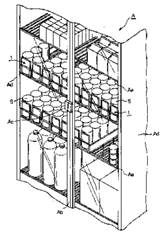
(Amics Corporation, Patent Registration No. 3022544)
Example Where Design Act Protection was NOT Recognized but Patent Act Protection was Recognized
A design of appearance derived from the property of a product (so-called functional design) is not protected by the Design Act (see Article 5(iii) of the Design Act). Such a design, however, may be able to be protected by the Patent Act or the Utility Model Act instead.
The following example employs, as a reflecting mirror, the shape of a paraboloid of revolution having a certain circular opening, which shape is essential to secure functions of a reflecting mirror of a parabolic antenna. Thus, the appearance of this antenna cannot be recognized as a design.
“REFLECTION MIRROR FOR RECEIVING SATELLITE BROADCASTING”
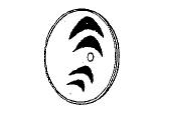
Trademark Act
The Trademark Act protects trademarks, which are marks used to distinguish goods or services of an entity from those of other entities.
The trademarks include a mark consisting of a three-dimensional shape (so-called “three-dimensional trademark”). The design of product appearance falls under the category of three-dimensional trademarks. Thus, if a design fulfills the protection requirements provided by the Trademark Act, that design can also be protected by the Trademark Act.
However, the Trademark Act also defines that a trademark consisting solely of a mark indicating, in a common manner, a three-dimensional shape cannot be registered (see Article 3(1)(iii) of the Trademark Act). Thus, it is generally difficult to have a design registered as a three-dimensional trademark.
The following cases (i) and (ii) are exceptions.(i) The mark indicating, in a common manner, a design of product appearance was recognized because the mark had obtained a distinguishing ability by actual use.
Example 1
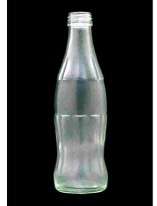
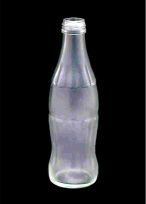
(the Coca-Cola Company, Trademark Registration No. 5225619)
Example 2
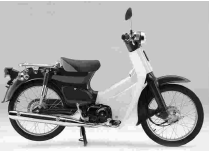


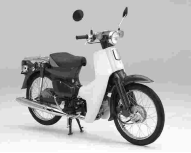
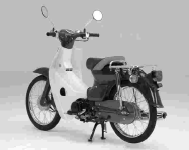
(Honda Giken Kogyo Kabushiki Kaisha, Trademark Registration No. 5674666)
(ii) The three-dimensional shape itself is extremely unique and thus recognized to have a distinguishing ability.

(CHOCOLATERIE GUYLIAN N.V. International Registration No. 0803104 *already expired)
In addition to the three-dimensional trademarks, a design that is a pattern and fulfills the protection requirements provided by the Trademark Act can also be protected by the Trademark Act.
For example, if a design on the surface of a brand bag has a distinguishing ability, the design may be able to be protected also by the Trademark Act.
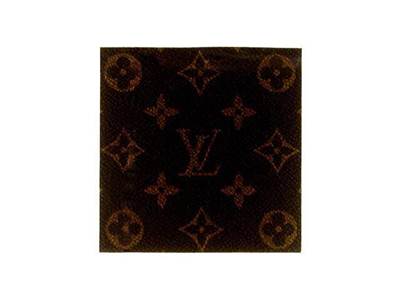
(Luis Vuitton Marché, Trademark Registration No. 2234425)

(Luis Vuitton Marché, Trademark Registration No. 2234426)

(Luis Vuitton Marché, Design Registration No. 1531569)
Copyright Act
The Copyright Act defines fine art as a work (see Article 10(1)(iv) of the Copyright Act).
The works of fine art include (a) pure art, which is made solely to be exhibited, such as paintings, sculptures, etc., and (b) versatile art, which is made for practical use. Design of product appearance is classified as the latter, i.e., versatile art.
Versatile art is in principle not protected by the Copyright Act from the viewpoint of segregating the Copyright Act and the Design Act, which is also intended to protect human creation.
However, not all design of product appearance is excluded from copyright act protection. A design that is sufficiently artistic to be recognized as pure art may be able to be protected as a work of fine art by the Copyright Act.
Artistry is determined by general public with a certain level of aesthetic sense, and a design to be registered as a work of fine art needs to have, in addition to practicality and functionality, artistry suitable for exhibition.
Unfair Competition Prevention Act
The Unfair Competition Prevention Act defines that the term “unfair competition” refers to “the act of creating confusion with another person’s goods or business by using an indication of goods or business (i.e., a name, trade name, trademark, mark, container, or packaging for the goods pertaining to a person’s operations, or any other indication of a person’s goods or business, the same applies hereinafter) that is identical or similar to the another person’s indication of goods or business that is well-known among consumers as that of the another person, or by assigning, delivering, displaying for the purpose of assignment or delivery, exporting, importing or providing through a telecommunications line those goods that use said indication” (confusion-creating acts) (see Article 2(1)(i) of the Unfair Competition Prevention Act).
That is, the unfair competition refers to an act of creating confusion with another person’s well-known product or business by using an indication identical or similar to that of the another person’s well-known product or business.
In a case where a design of product appearance is well-known and has a distinguishing ability, the design falls under the indication of a product etc., and confusion-creating acts against such a design is thus recognized as unfair competition.
The Unfair Competition Prevention Act defines that the term “unfair competition” also refers to “the act of assigning, leasing, displaying for the purpose of assignment or leasing, exporting or importing goods that imitate the configuration of another person's goods (excluding configuration that is indispensable for ensuring the function of said goods)” (goods-configuration-imitating acts) (see Article 2(1)(iii) of the Unfair Competition Prevention Act).
Thus, the design of product appearance will be protected from “the act of creating goods that are substantially identical to another person’s goods based on the configuration of said goods” (see Article 2(5) of the Unfair Competition Prevention Act), for the period of three years from the date on which the product is sold for the first time in Japan. This provision protects especially design of appearance of a product for which design right can be shortly established or whose life span is short.
意匠の疑問・お悩みはHARAKENZOに相談ください!

意匠登録や意匠トラブルの解決にあたっては、専門家の判断が欠かせません。
意匠のことでお悩みがありましたら、いつでも知的財産のプロフェッショナル集団であるHARAKENZO事務所にご相談いただけます。
